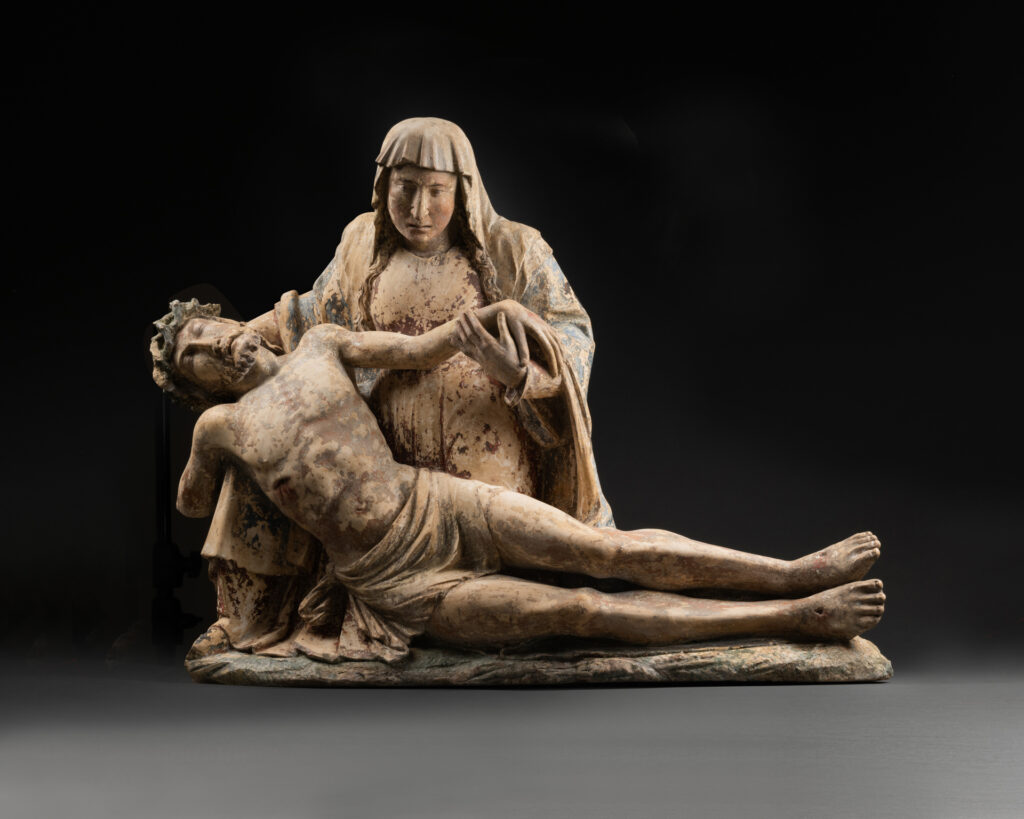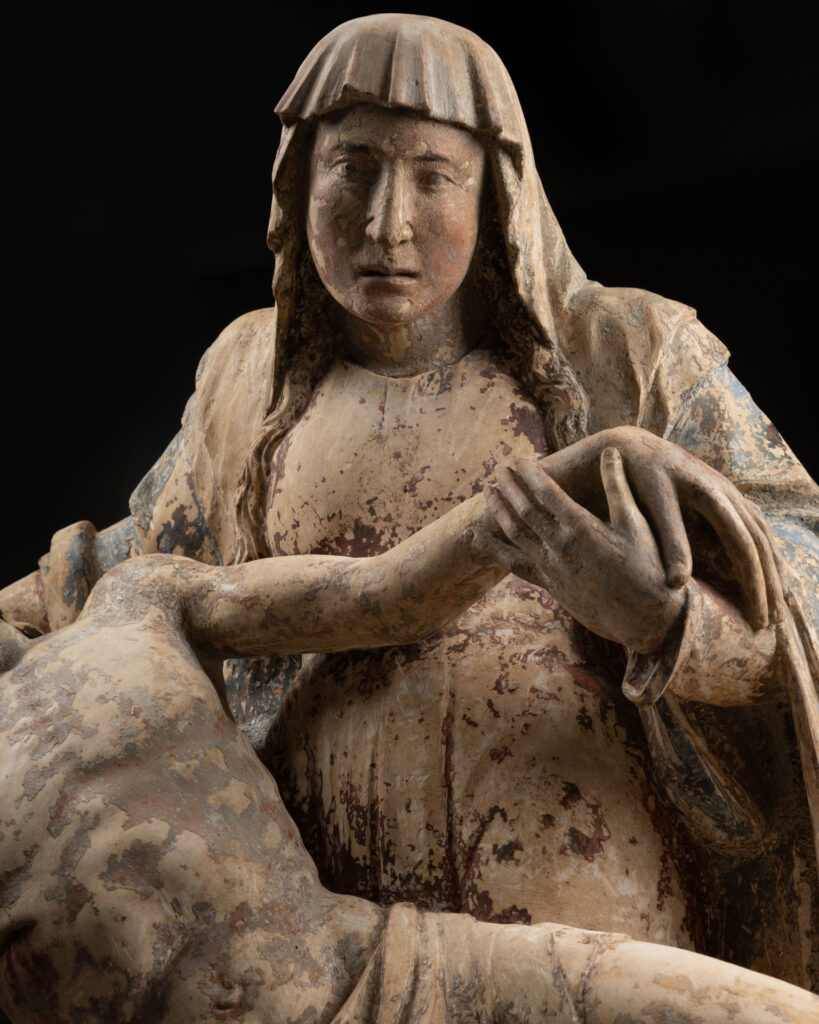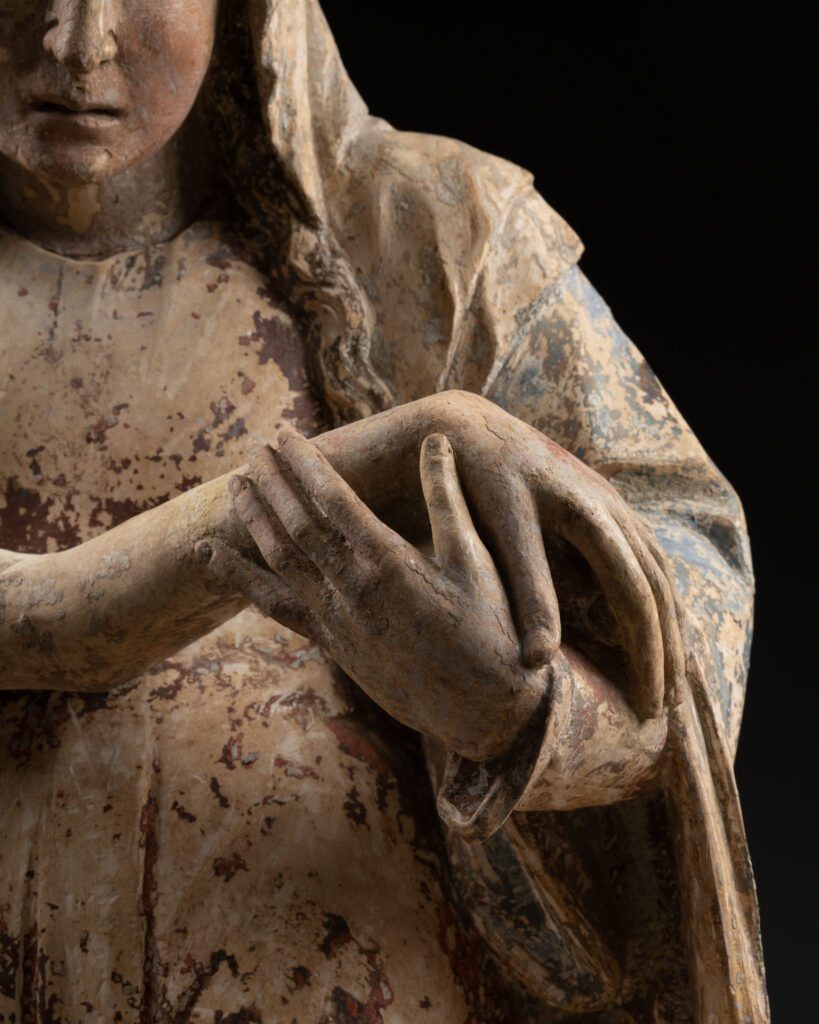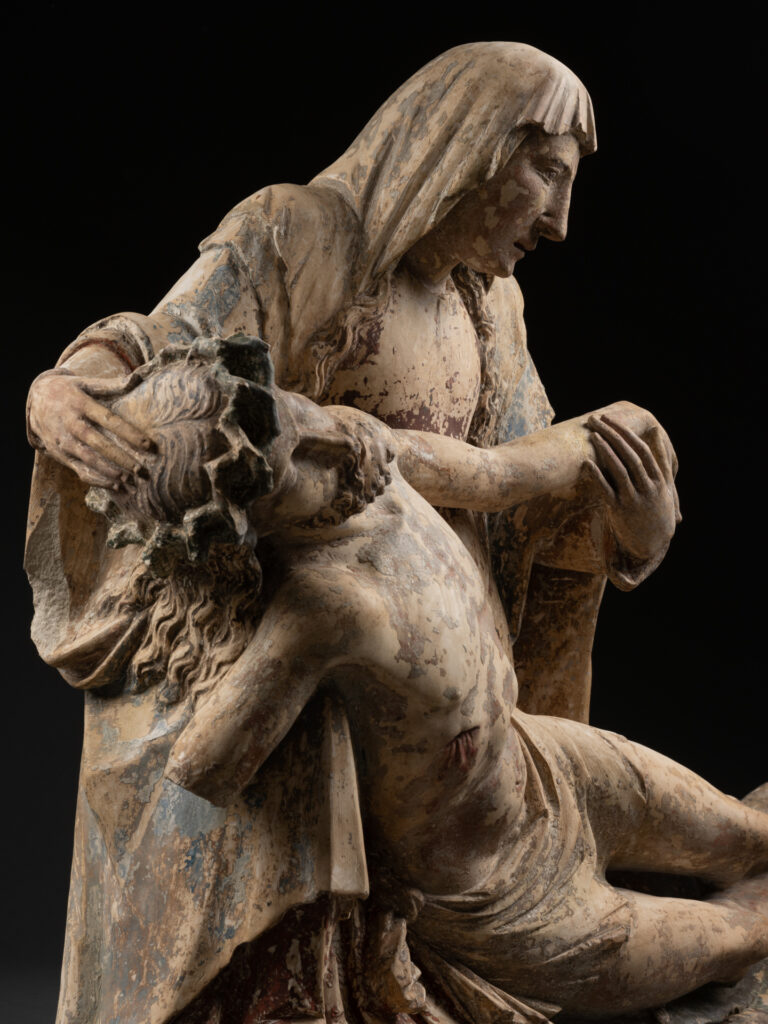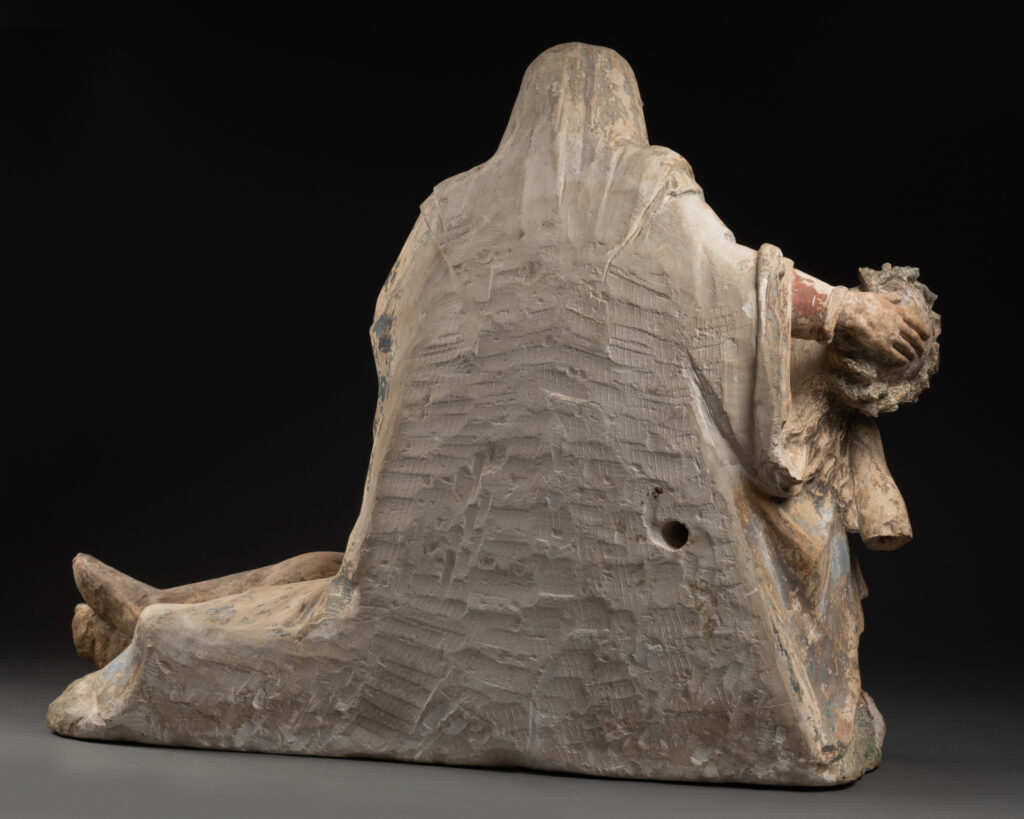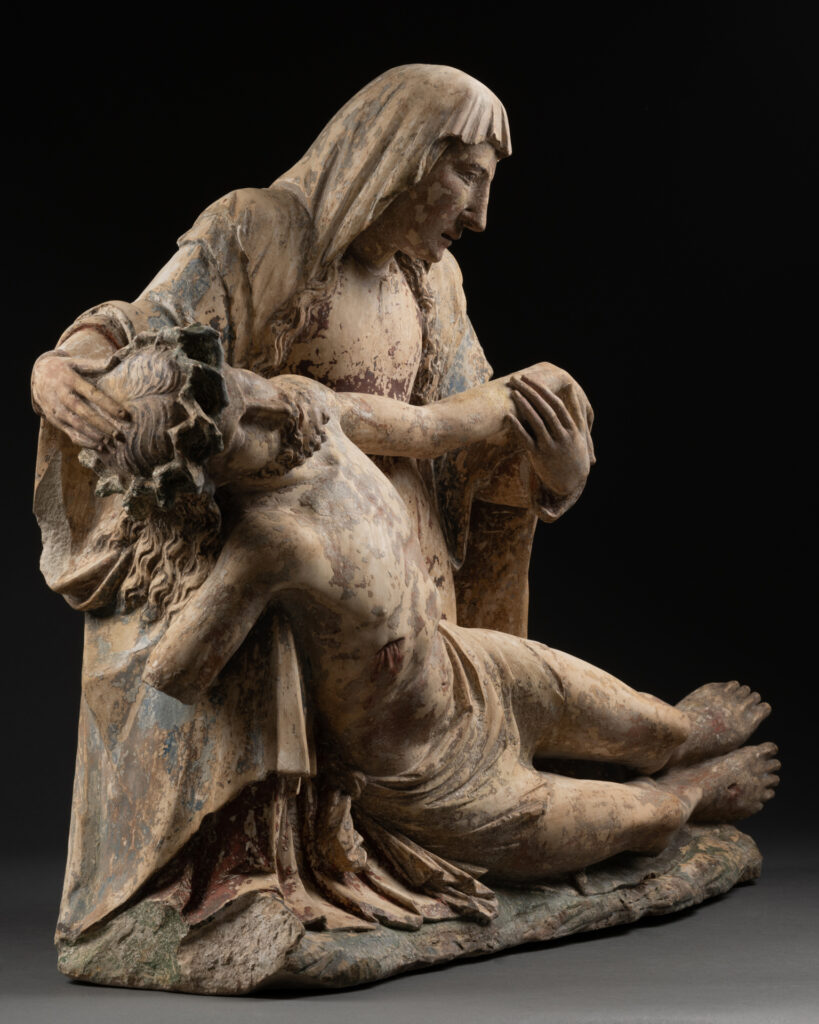This beautiful polychrome stone sculpture depicts the Virgin of Pity or Pietà. This theme is not present in the Bible, but derives from the apocryphal accounts. It depicts the moment before the Descent from the Cross, when the Virgin Mary supports the lifeless body of Jesus. This scene differs from the Deploration of Christ, which involves other characters.
The iconography of the Virgin of Pity spread throughout Europe in the late Middle Ages: the theme first appeared in Germany in the 14th century, and in France and the northern regions in the 15th and 16th centuries. However, it was in Italy that the theme reached its apogee, with Michelangelo’s famous Pietà of 1499, exhibited in St. Peter’s Basilica in Rome. In France, the iconography of the Virgin of Pity enjoyed great success, particularly in Burgundy, where numerous examples can still be found today.
The taste for this theme reflects the religious mores of the time, as the faithful wished to get closer to the human dimension of Christ and the saints. The Virgin of Pity highlights the human condition of both characters: Mary is depicted in her role as mother holding the lifeless body of her son. It’s a representation of a moment of intimacy, full of emotion, that stems from the Devotio moderna movement.
This current of thought aims to reform the foundations of the Church by bringing the faithful closer to God. Intermediaries are eliminated, and the humanity of Christ and the saints is emphasized as accessible models of life and piety. Thanks to this, the faith of the faithful becomes more active, and man becomes the source of his own salvation. To do this, the faithful seek to imitate Christ during their life on Earth, for by acting in their own way, they deserve salvation.
Our sculpture is unusual in that it depicts Christ’s body sliding off his mother’s lap. The most widespread representation in sculpture is that of the body of Jesus resting on Mary’s knees, as seen in the Virgin of Pity, dated 1457 and exhibited at the Petit Palais in Avignon. More rarely, and in the case of our work, the Virgin struggles to hold her son’s lifeless body, which she supports with one knee, holding his head and hand. In this way, Christ’s body appears very heavy, slipping from the Virgin’s arms as if to accentuate the weight that the death of a child represents for a mother. She is resigned, but accompanies him in his tragic fate with a tender wave of the hand.
Another element that makes this representation so rare is the Virgin’s gaze. She doesn’t direct it towards her son, but instead diverts it towards the viewer, inviting him to reflect and meditate:
“I’m speaking to you, to all of you who pass by here! Look and see if there is any pain like mine, Like that with which I was struck! The Lord has afflicted me in the day of his fierce anger.” (Lamentations 1:12)
The Virgin is not expressing her suffering, a motif very common to the theme of the Virgin of Pity. She is calm and accepts Jesus’ sacrifice to save humanity.
In keeping with medieval tradition, she is dressed in a rich garment consisting of a red gown and a blue mantle, adorned with gold detailing. It’s veiled, but here the usual chin strap is dropped. This choice of clothing reflects the interest in the textile industry at the time. In some regions, such as Champagne, artists dressed the Virgin Mary and the saints in clothing that was not historically accurate, but in line with the fashion of the time.
This Virgin of Pity is typical of 16th-century Champagne sculpture. This barrel is quite unified and elegant. The limbs are elongated, as here for Mary’s arm and Jesus’ legs. The Virgin is shown looking away from her dead son as she ponders future Passion narratives. Marie’s face in Champagne sculpture is also very characteristic, with an oval face and rounded forehead. His face is slim and unmarked, his cheeks are thin and his eyes are not wide-set. These eyes are also very distinctive, with a small bead on the eyelid. The lips are thin and open with a thin slit. The stylistic particularity of our Pietà lies in the elongation of the figures’ fingers, which are very long.
Christ’s position is reminiscent of the Virgin of Pity in the church of Saint-Nicolas in Saint-Nicolas-de-Port, Meurthe-et-Moselle, also dating from the 16th century. The stylistic work carried out on our sculpture can be compared to the work of the Master of Rouvroy. The treatment of the Virgin’s hair and folds is reminiscent of that used on the Virgin and Child in the Louvre, dating from the first quarter of the 16th century.
